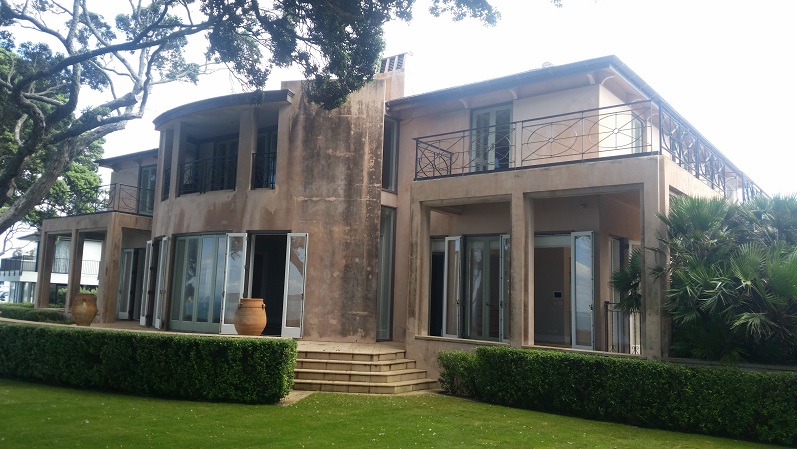Solid plaster cracks as it becomes very brittle over time and does not have the flexibility to accommodate thermal movement (expansion and contraction) of the building structure. Other contributing factors include poor mix quality, poor application techniques and lack of proper detailing. When the solid plaster cracks, moisture gets into the plaster and expedites the deterioration process.
Solid plaster over masonry substrates often delaminates from the substrate as it ages (often referred to as drummy plaster). This can be identified by tapping the plaster (it has a hollow sound) or by running a smooth stone over the plaster surface (you will hear the elevated sound when running the stone over the drummy areas). Once solid plaster has delaminated from the substrate, its propensity for cracking increases dramatically.
Cracks in solid plaster over a masonry substrate often follow the mortar joins (horizontal and vertical) but can also appear as a random pattern (spider web pattern). The cracks tend to start at the back of the solid plaster and make their way to the front face of the plaster overtime. Hence, we often find the visible cracking is just the tip of the iceberg when we start repairing solid plaster systems.
Solid plaster over rigid backing tends to crack at the substrate sheet joins. The pressure exerted by a moving timber frames building is concentrated at the sheet joins and hence the cracking tends to follow those joins (horizontal and vertical) – although random fracturing can also be present.
Solid plaster over non-rigid backing is random in appearance (without mortar joins or sheet joins to create increased stress points). With non-rigid backing, we often find the chicken mesh has not been properly embedded in the plaster. Instead, it has been pushed back against the building paper and is offering very little reinforcing strength to the solid plaster.
The use of metal finishing beads with solid plaster has also been proven to be problematic over time. The solid plaster cracks away from the metal beads due to differential thermal movement between the materials. Water gets into the plaster, causing the plaster and paint to deteriorate. Metal beads also tend to rust over time and become very unsightly.

